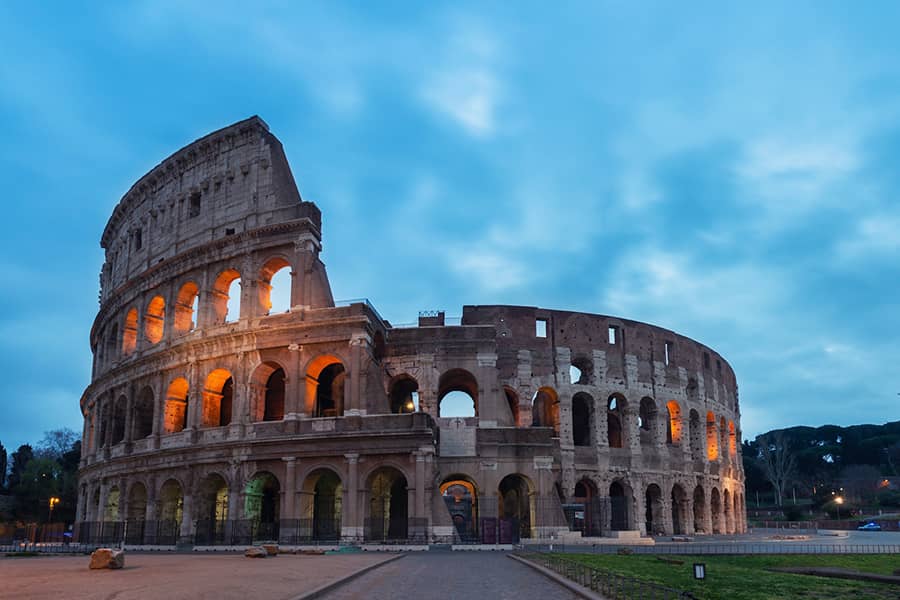The Colosseum: Gladiators, Emperors, and Spectacles
April 17, 2023
The Colosseum, also known as the Flavian Amphitheatre, is an iconic ancient Roman amphitheater located in the heart of Rome, Italy. This grand structure is a testament to the architectural marvels of ancient Rome and has a rich history filled with intriguing stories of gladiators, emperors, and spectacular events that captivate the imagination of people to this day.
Table of Contents
Introduction
The Colosseum stands as a symbol of the glory and grandeur of the Roman Empire. Its history is filled with fascinating tales of triumph and tragedy, making it one of the most captivating landmarks in the world. In this article, we will delve into the history, construction, events, and significance of the Colosseum, exploring its enduring legacy and cultural significance.
History of the Colosseum
The history of the Colosseum dates back to the Flavian dynasty, during the reign of Emperor Vespasian, who ordered its construction in 70-80 AD. The Colosseum was built on the site of a drained lake, the Stagnum Neronis, and was initially known as the Flavian Amphitheatre, named after the ruling Flavian dynasty.
Construction and Architecture
The Colosseum is a remarkable feat of ancient Roman engineering and architecture. It is a massive oval structure with a circumference of 527 meters, an average height of 48 meters, and could seat an estimated 50,000 to 80,000 spectators at its maximum capacity. The amphitheater was made of travertine limestone, tuff, and brick, and featured four floors with arches, columns, and decorative elements.
Gladiators: Fighters of the Colosseum
One of the most iconic aspects of the Colosseum is its association with gladiatorial games. Gladiators were trained fighters who entertained the crowds with deadly combat in the arena. These fighters, often slaves or prisoners of war, would battle each other or wild animals in elaborate spectacles that were both thrilling and gruesome.
Spectacles and Events at the Colosseum
Apart from gladiatorial games, the Colosseum was also the venue for various other events and spectacles. These included mock naval battles, animal hunts, chariot races, and theatrical performances. The amphitheater was a hub of entertainment and served as a significant social and cultural center for Roman society.
Emperors and the Colosseum
The Colosseum was closely associated with the Roman emperors, who used it as a means to display their wealth, power, and generosity to the people. Emperors would often sponsor games and events at the Colosseum as a way to gain favor with the public and solidify their authority.
Decline and Legacy of the Colosseum
Despite its glorious history, the Colosseum faced decline over the centuries. The fall of the Roman Empire, natural disasters, and the decline of the gladiatorial games led to neglect and damage to the structure. However, the Colosseum’s legacy endured, and it remained an iconic symbol of ancient Rome’s architectural and cultural achievements.
Importance and Significance
The Colosseum holds immense historical and cultural significance. It was not only a grand amphitheater for entertainment but also a reflection of the Roman Empire’s social, political, and economic aspects. It represented the power and authority of the emperors, the social hierarchy, and the values of ancient Roman society. The Colosseum remains an important archaeological site and a UNESCO World Heritage site, attracting millions of visitors from around the world every year.
Colosseum Today
Despite the passage of time, the Colosseum stands as a remarkable testament to ancient Roman engineering and architecture. Today, it is a popular tourist destination, offering visitors a glimpse into the grandeur of ancient Rome. The Colosseum also serves as a venue for cultural events and performances, keeping its legacy alive in the modern era.
Conclusion
The Colosseum is a timeless marvel that continues to captivate people with its rich history, grand architecture, and intriguing stories of gladiators, emperors, and spectacular events. Its significance as a cultural and historical landmark cannot be overstated, and its enduring legacy stands as a testament to the greatness of ancient Rome.
FAQs
- Q: Can I visit the Colosseum today?
A: Yes, the Colosseum is open to visitors and is a popular tourist destination. - Q: What were gladiatorial games?
A: Gladiatorial games were deadly combat events held in the Colosseum, where trained fighters battled each other or wild animals for entertainment. - Q: Who built the Colosseum?
A: The Colosseum was built during the reign of Emperor Vespasian of the Flavian dynasty in 70-80 AD. - Q: Is the Colosseum a UNESCO World Heritage site?
A: Yes, the Colosseum is a UNESCO World Heritage site, recognized for its cultural and historical significance. - Q: How many spectators could the Colosseum hold?
A: The Colosseum could seat an estimated 50,000 to 80,000 spectators at its maximum capacity.
See also: From Myth to Reality: 5 Amazing Ancient Civilizations
Test your Knowledge!
Which car featured prominently in the 1960s television series Route 66?
Recent Posts
How to Buy a Home After 60 (Step-by-Step Guide)
July 14, 2025
Top 10 Mobility Aids Covered by Medicare
July 14, 2025
How Much Should You Save for Retirement After 50?
July 11, 2025
Best Personal Loans for Seniors with Fixed Income
July 10, 2025
SUBSCRIBE TO OUR NEWSLETTERS
Subscribe our newsletter for latest news, questions. Let's stay updated!






